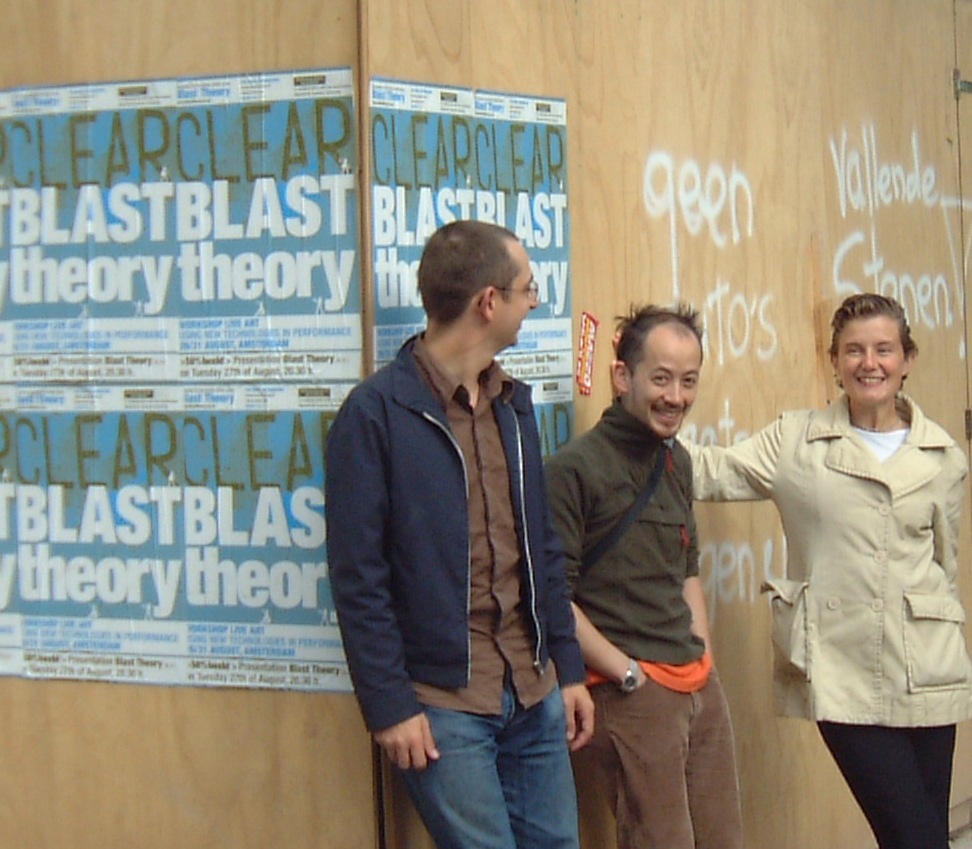Blast Theory is renowned internationally as one of the most adventurous artists' groups using interactive media, creating groundbreaking new forms of performance and interactive art that mixes audiences across the internet, live performance and digital broadcasting. Led by Matt Adams, Ju Row Farr and Nick Tandavanitj, the group’s work explores the relationship between real and virtual space with a particular focus on the social and political aspects of technology. It confronts a media saturated world in which popular culture rules, using video, computers, performance, installation, mobile and online technologies to ask questions about the ideologies present in the information that envelops us.
Early works such as Gunmen Kill Three, Chemical Wedding and Stampede drew on club culture to create multimedia performances that invited participation. From 1997, the group’s work further diversified into online, installation and interactive works such as the infamous Kidnap and internationally acclaimed Desert Rain.

Since 2000, Blast Theory has been exploring the convergence of online and mobile technologies in collaboration with the Mixed Reality Lab, University of Nottingham. Projects include the award-winning Can You See Me Now? (2001), Uncle Roy All Around You (2003) and I Like Frank in Adelaide (2004) - the world’s first 3G mixed reality game – and more recently, Day Of The Figurines, which premiered in Europe in September 2006.
In 2004 Blast Theory was invited to create a permanent exhibit for the Science Museum's Energy Gallery and is currently developing a major new interactive work for The Public's new building in West Bromwich designed by Will Alsop and due to open in September 2006. Flypad will be a permanent exhibit using augmented reality to create a thrilling, collaborative experience that combines game play with interaction for up to twelve players at any time.
Blast Theory will also be premiering their new work, Day Of the Figurines in Berlin September 2006. Day Of The Figurines continues Blast Theory’s enquiry into the nature of public participation within artworks and within electronic spaces (here, through SMS). It uses emergent behaviour and social dynamics as a means of structuring a live event. It invites players to establish their own codes of behaviour and morality within a parallel world.
The group has received four BAFTA Award nominations since 2002, received the much coveted Golden Nica for Interactive Art at Prix Ars Electronica in 2003 and was presented with the Maverick Award at the Game Developers Choice Awards in the USA in 2005.
Internationally, Blast Theory’s work has been represented at art fairs and festivals including the Biennale of Sydney, Festival Escena Contemporanea in Madrid, the Dutch Electronic Arts Festival in Rotterdam, Palestine International Video Festival, Basel Art Fair and ArtFutura in Barcelona.
